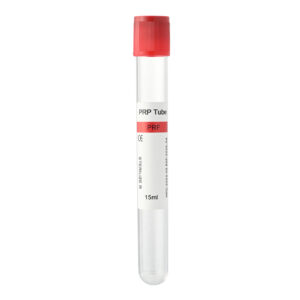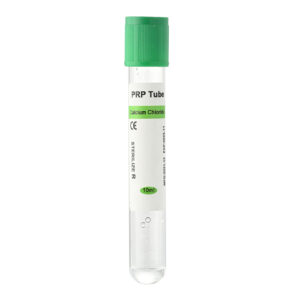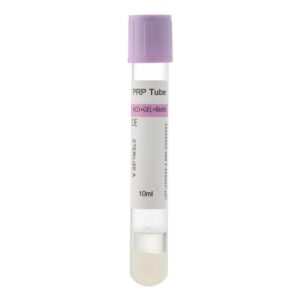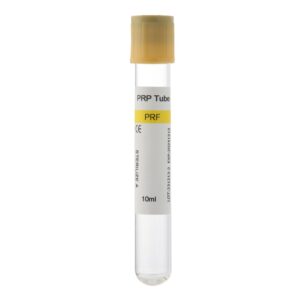What are PRF Injections? Platelet-rich fibrin (PRF) injections represent a cutting-edge technique in regenerative medicine, showing exceptional therapeutic potential, particularly in dermatology, dentistry, and orthopaedics. Unlike traditional Platelet-Rich Plasma (PRP), prepare PRF without the use of anticoagulants, allowing for the preservation of a complex network of platelets, white blood cells, and cytokines. This unique preparation method endows PRF with significant biological activity, making it rich in growth factors and cytokines that play a crucial role in promoting tissue healing, regeneration, and immune modulation.
Detailed PRF Injection Procedure
The PRF injection process typically involves several key steps, each critical to ensuring the safety and effectiveness of the treatment:
- Blood Collection: Draw blood from the patient’s vein, usually 30-60 millilitres, depending on the required amount of PRF. Perform the blood collection in a sterile environment to prevent any external contamination.
- Centrifugation: Immediately place the collected blood in a centrifuge, where carefully adjusted speed and duration separate the fibrin-rich middle layer. This step relies on low-speed centrifugation, which not only ensures the formation of the fibrin-rich platelet layer but also retains a higher number of white blood cells and stem cells.
- Extraction: After centrifugation, extract the upper yellowish transparent liquid, which is the fibrin-rich portion containing growth factors, known as PRF. Since no anticoagulants are used, the PRF retains its natural state, with 100% of the blood/plasma undiluted, ensuring maximum treatment efficacy.
- Injection: Directly inject the extracted PRF into targeted treatment areas, such as facial skin, the scalp, or joints, to promote the repair and regeneration of damaged tissues. A trained medical professional typically performs the injection process to ensure precise delivery of PRF to the treatment site.
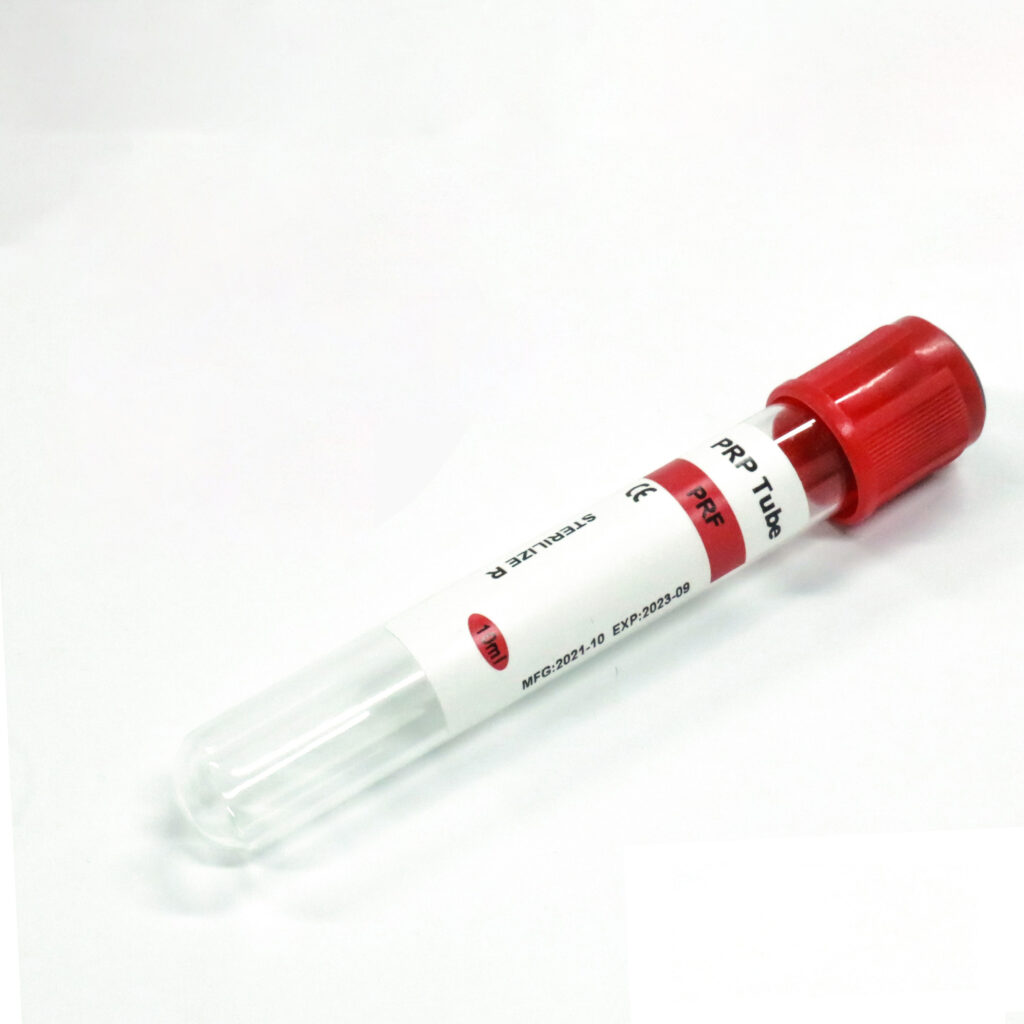
Post-Procedure Care for PRF Injections
To ensure optimal treatment outcomes and a swift recovery, post-procedure care is crucial. Specific care guidelines include:
- Cold Compress: Applying a gentle cold compress to the injection area within the first 24 hours can help reduce swelling, bruising, and any potential discomfort. This step is particularly important for preventing early inflammatory reactions.
- Avoid Touching and Use of Cosmetics: During the first few days post-injection, patients should avoid touching the treated area and refrain from using cosmetics or skincare products that may contain irritating ingredients to prevent infection or irritation.
- Daily Care: Patients should avoid strenuous exercise and exposure to high-temperature environments (such as saunas or hot baths) for one week after the injection to prevent overstimulation of the injection site, which could interfere with the healing process.
Key Advantages of PRF Injections
PRF injections offer several distinct advantages over other treatment methods:
- More Natural Healing Process: PRF uses the patient’s biological materials, reducing the risk of immune reactions or allergic responses to foreign substances providing a more natural approach to tissue repair.
- Longer-Lasting Effects: The fibrin matrix in PRF allows for the slow release of growth factors, providing continuous stimulation to the damaged tissues, significantly extending the duration of the treatment’s effects and enhancing tissue regeneration.
- Comprehensive Therapeutic Benefits: PRF is rich in healing factors and also contains various white blood cells and cytokines, which offer anti-inflammatory and immune-modulating effects, helping to reduce the risk of infection and accelerate recovery.
Broad Applications of PRF Injections
PRF injections are widely applicable across various medical and cosmetic needs, including but not limited to:
- Facial Rejuvenation and Aesthetics: By stimulating collagen production in the skin, PRF injections can reduce wrinkles, improve skin elasticity, and enhance overall skin texture.
- Hair Restoration: PRF injections can effectively prevent hair loss and promote new hair growth by improving scalp health and stimulating hair follicles, which is especially useful in early-stage hair loss interventions.
- Joint and Soft Tissue Repair: PRF injections play a significant role in treating conditions such as arthritis and tendinitis, helping to alleviate pain and restore function in damaged tissues.
Suitable Candidates for PRF Injections
PRF injections are suitable for a broad range of patient groups, including:
- Individuals Seeking Rejuvenation and Aesthetics: Particularly those looking for a natural method to improve skin texture, reduce wrinkles, and restore skin elasticity.
- Athletes and Those with Sports Injuries: For those who regularly engage in high-intensity sports or suffer from chronic joint and muscle pain, PRF injections can significantly alleviate pain and accelerate recovery from sports injuries.
- Patients with Chronic Hair Loss: Suitable for men and women experiencing hair loss, especially those seeking a non-surgical, minimally invasive treatment option.
- Dental Patients: Following dental procedures, such as bone grafting or implant surgery, PRF injections can effectively promote post-operative healing, reduce complications, and speed up recovery.
- Post-Surgical Recovery Patients: For patients needing rapid healing and reduced post-surgical complications, PRF injections provide a safe and effective recovery option.
Detailed Comparison Between PRF and PRP
While both PRF and PRP utilize components from the patient’s blood to promote healing, there are significant differences in their preparation methods and final composition:
- Composition and Structure: PRF contains a higher concentration of cellular components, such as white blood cells, which not only enhance tissue healing but also provide some level of infection control. PRP, on the other hand, is primarily rich in platelets. The low-speed centrifugation used in PRF preparation allows more white blood cells and stem cells to be retained in the final PRF, further boosting its therapeutic potential.
- Release Time: The growth factors in PRF are released slowly through the fibrin matrix, offering longer-lasting therapeutic effects. In contrast, PRP’s action is relatively short-lived, making it more suitable for short-term treatment needs.
Conclusion
In conclusion, Platelet-Rich Fibrin (PRF) injections represent a significant innovation in the field of regenerative medicine, offering a natural, safe, and effective treatment by utilizing the patient’s biological materials. Compared to traditional PRP, PRF injections demonstrate more sustained and comprehensive therapeutic effects, particularly in areas such as cosmetic rejuvenation, hair restoration, and joint repair. As technology continues to advance and clinical applications expand, PRF injections are poised to become the preferred treatment option for a broader range of patients, delivering more precise and personalized medical care. This technique not only reflects modern medicine’s deep exploration of natural healing mechanisms but also signals a promising future for regenerative medicine.


